"Detailed views of fishing, with intertitles. " oldfilm.org
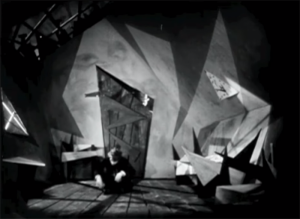
"The TellTale Heart is a 1928 American silent film directed by Charles F. Klein, based on the short story by E.A. Poe. This experimental, avant-garde film used many new techniques and influenced a series of cinematic Poe renditions in both the United States and France, including The Fall of the House of Usher by M. Webber, made in the same year. The two films have many aesthetic similarities, although the narrative in The TellTale Heart is significantly less abstract. The music underscoring the work creates a parallel drama to the events unfolding on the screen. After the title sequence, some of the text from the original short story is projected to foreshadow the gruesome events to follow. A still of the Old Man's eye is layered on the top of this scrolling text, accompanied by the first statement of the “Vulture Eye Chord”, which continues to come back as a leitmotif throughout the score. Also prominent is the leitmotif for our narrator, which takes the shape of a disturbingly quick and easily unhinged "Death Waltz". Upon strangling the Old Man for his vulture eye, the waltz quickly dissolves into a quick 5/8 section, dignifying the beating of a heart, which gradually slows. After two detectives come to investigate the scene, the narrator having initially been successful in covering up his deceit, the underscoring reveals to us that he's been tortured by his deeds as the two leitmotifs emerge from an otherwise calm texture. After hearing the beating of the Old Man's heart beneath the floorboards, the narrator admits to his sin and reveals the body at the end of the film" Center for Fiction, NY.
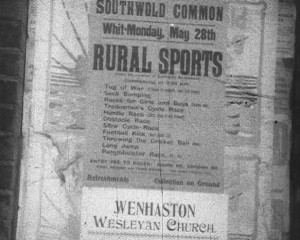
"This is a record of a rural sports day held on Southwold Common on Whit Monday, 1928. (Identified on a still of a poster.)" (EAFA Database).
"On May 28th 1928, Whit Monday, Barrett filmed the races and prize giving of the “Rural Sports”, held on the common. These sports had flourished before the First World War, and this was an attempt to revive them. Although on the film everyone seemed to be enjoying themselves, these Rural Sports were not held again. Barrett Jenkins was pleased with the results of his filming, and so continued" (Cleveland 2009, 139).
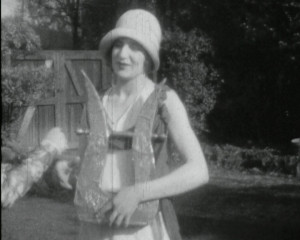
"Sally yearns for the better things in life. Her mother takes in washing and asks Sally to return some laundry. En route, Sally peers over the gate of a house. She is spotted by the owner, Mrs Bond-Regent, who has just returned from shopping for her niece's garden party to learn that her maid has left. Sally is dragooned into becoming the maid for the afternoon. The film involves Sally's mishaps. The guests, who are all women, include an artist, a musician, an actress, a dancer, a representative of The Simple Life League, and a woman dressed like a man (whom Sally mistakes for a man). Despite her shortcomings as a maid, the guests all see wonderful potential in Sally and try to teach her their respective arts, but to no avail. After being persuaded to smoke a pipe, Sally flees the party and returns home, eschewing the better thing in life" (EAFA Database).
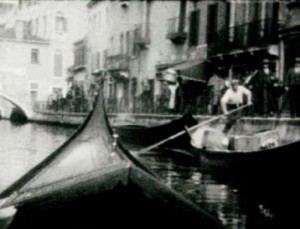
"Travelogue with intertitles of Alexander Black's trip to Europe in 1928. It includes footage of air and sea travel, a phantom ride in a gondola, and footage of Black himself feeding pigeons in Venice, Italy." UC Berkeley Library.

"Produced in the late 1920s, this amateur film documents the construction of the Santa Fe Railway extension connecting San Angelo and Sonora. In 1928, the Atchison, Topeka and Santa Fe Railway Company (Santa Fe) purchased the Kansas City, Mexico and Orient Railway Company of Texas (Orient of Texas). In so doing, they also acquired the company’s system of track lines, 465 miles of which were in Texas. As a subsidiary of Santa Fe, Orient of Texas then began construction on a pair of extension lines: one spanning the 72 miles from Paisano to Presidio and another the 65 miles from San Angelo to Sonora. This amateur film captures early construction on the second, with a small crew using work horses to clear the route and build bridges. The San Angelo-Sonora line was completed on July 1, 1930. Santa Fe abandoned the line in 1976" Texas Archive of the Moving Image.
"This film discloses, concisely and with cinematic dexterity, what passes in the mind of a dying soldier in a shell hole in Flanders. The three memories flashing back to the suffering doughboy were well done and the film as a whole disclosed the best sense of cinematics revualed bv anv contender in this division." Photoplay, Nov. 1929, 67.
"Whither Flowing," depicts the nervous evils caused by parents in the thoughtless upbringing of children. The drama was compactly told, well acted and directed, and was marked by unusual photography." Photoplay, Nov. 1929, 67. "...Whither Flowing is a psychological study of hysteria.... Dr. Heise's Whither Flowing won second award in the dramatic division of the recent Photoplay Magazine contest...” Movie Makers, Feb. 1930, 104.
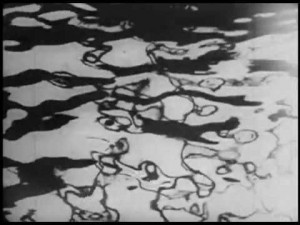
"This film is a study of water in the new manner: A series of photographic shots of the reflections of boats, ferry houses, docks, etc., on water and the whole resulting in a chain of pure abstract patterns of shapes in water. Steiner achieves an astonishing tempo as his film advances. The picture is bound to attract wide attention and a great deal of discussion wherever is shown." Photoplay, Nov. 1929, 67
"Jac Thall, of 957 77th Street, Brooklyn, N.Y., a publicity man for theatrical circuit, captured the fourth prize in the dramatic division for his little serio-comedy of the tribulations of a Povery Row movie company. This was called 'A Quickie' and was marked by some unusual amateur acting by Helen Johnson. The photography of Mario D'Giovanni, 45 Garmine Street, New York, was admirable too. 'A Quickie' was shot with a Bell and Howell on 35 milimeter film and was made chiefly on Staten Island." Photoplay, Nov. 1929, 86.
Total Pages: 299